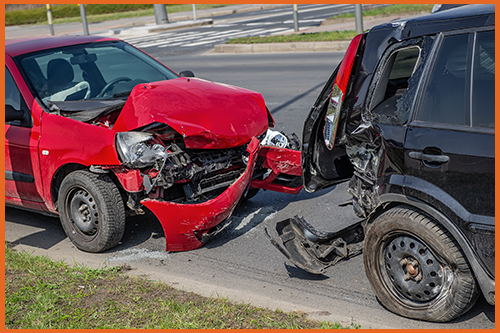Even a low-speed fender bender can lead to expensive rear-end damage. Whether someone bumped into your bumper at a stoplight or you backed into a pole, the repair bill can be a shock.
So how much does rear-end damage cost to repair? The answer depends on several factors—like the severity of the damage, parts involved, and whether there’s hidden structural harm beneath the surface.
Here’s what you should know about rear end damage repair cost, plus a look at when it might be better to sell your damaged vehicle.
Common Types of Rear-End Damage
Rear-end collisions often affect more than just the bumper. Typical damage includes:
- Cracked or dented bumpers
- Trunk lid or tailgate misalignment
- Damaged tail lights
- Rear frame or crumple zone damage
- Suspension or alignment issues
While some of these can be cosmetic, others affect how your car drives—or even how safe it is.
What’s the Average Rear-End Repair Cost?
Here’s a rough breakdown of typical rear-end collision damage repairs:
|
Type of Repair |
Average Cost Range |
|
Rear bumper replacement |
$300 - $1,500 |
|
Trunk or tailgate repair |
$500 - $2,000 |
|
Tail light replacement |
$100 - $750 |
|
Frame damage repair |
$600 - $5,000+ |
|
Suspension realignment |
$250 - $1,000 |
If your car is newer, has sensors or cameras in the bumper, or is a luxury vehicle, expect costs on the higher end.
Can You Drive a Car With Rear-End Damage?
If the damage is cosmetic, you might be able to keep driving the car—though it may not be legal or safe if the lights are broken or panels are falling off.
But if there’s any sign of frame damage, alignment issues, or electrical system problems (like backup cameras or sensors), you’ll want to get it checked right away. These issues can worsen over time and lead to more expensive repairs—or even accidents.
Is It Worth Fixing Rear-End Damage?
If your car is worth $10,000 and the repair bill is $1,200, fixing it may be a no-brainer.
But if you’re looking at $3,000+ in repairs for a car worth $4,000, it might not make financial sense. That’s especially true if you have an older car, high mileage, or if you’re already dealing with other issues like rust or engine problems.
How Insurance Plays Into the Decision
If the other driver was at fault, their insurance should cover the costs. But if you're filing through your own collision policy, you’ll need to factor in:
- Your deductible
- Potential rate hikes after filing a claim
- Whether your policy fully covers frame or sensor repairs
Sometimes, insurance payouts don’t cover the full cost—especially if the vehicle is declared a total loss.
Selling a Car With Rear-End Damage
If the repair bill is too steep, or the insurance process isn’t worth the hassle, you can still sell your vehicle. While dealerships or private buyers may walk away, companies like DamagedCars.com specialize in buying cars with rear-end collision damage.
We provide:
- Guaranteed offers in less than 2 minutes
- Free towing and no repair requirements
- Fast payment on the spot
Whether your bumper’s cracked or the frame is bent, we’ll take the vehicle as-is.
Final Thoughts
Rear-end damage repair costs can quickly add up—especially if there’s frame or suspension damage involved. If you're wondering how much does rear end damage cost to fix, it's worth getting an estimate—but also worth exploring your options.
DamagedCars.com makes it easy to sell your vehicle in any condition. We’ll buy your car with rear-end damage, help you skip the body shop, and put cash in your pocket fast.
Get your free offer today and let us take that damaged car off your hands.



